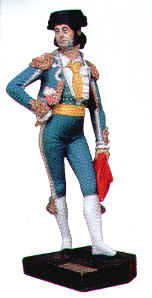|
|
The earliest indications of people living in San Diego date back 20,000 years. They called themselves "Kumeyaay". When Spaniards arrived, they used the word "Diegueno" to identify Indians associated with Mission.
Juan Rodriguez Cabrillo reported that the native's "were good natured and attractive people". They were apprehensive but non-aggressive. They were proud and independent people, who resisted change and clung passionately to their customs and beliefs.
With the introduction of Spanish, many Kumeyaay retreated to the hills. Kumeyaay were not politically organized people and therefore were unprepared to deal with the imposition of European culture. They were further debilitated by the physical onslaught of disease, to which they had no immunity.
The missionaries were responsible for bringing Kumeyaay into the rigid organization of mission life. They were taught to raise food and learn skills for survival in their changing world. This was not always voluntary. The missionaries wanted the lands divided up for the benefit of Indians.
Indians, who were freed by Mexico, were supposed to get portion of the missions lands. However, dominating Spaniards and Californians used political pull to give out land to friends, with no consideration given to Indians. Many tried to return to the ways of their ancestors, but were hindered by changing times. In 1875, United States government established the first reservations, recognizing them as sovereign properties.

|
|

